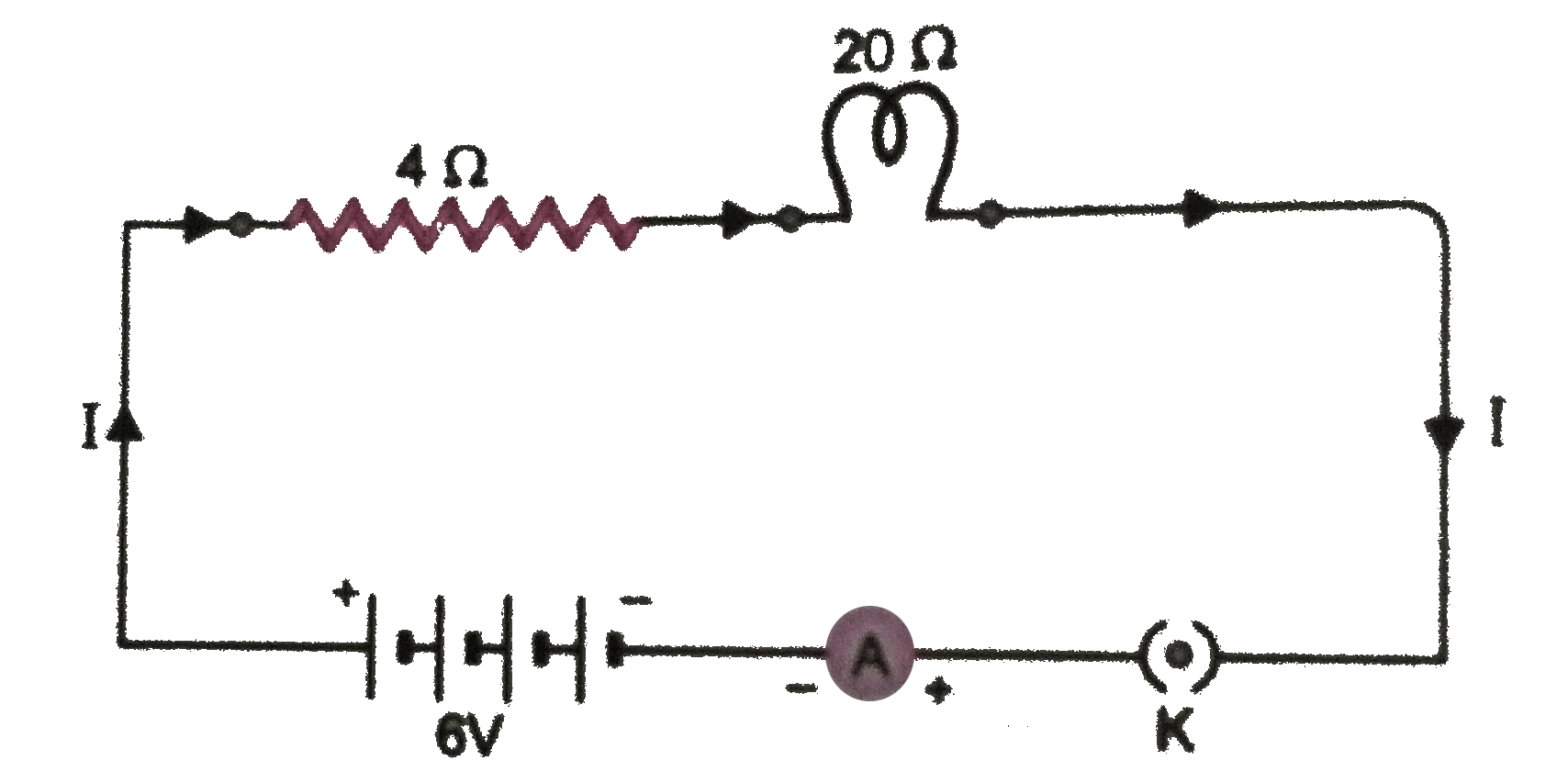What would be the resistance of a conductor if the current flow through it is 0.35 A when the potential difference across is 1.4 V?
To find the resistance of the conductor, we can use Ohm's Law, which states that:
V=I×R
Where:
- V is the potential difference (voltage) across the conductor,
- I is the current flowing through the conductor,
- R is the resistance of the conductor.
Given:
- Current I=0.35A
- Potential difference V=1.4V
We need to find the resistance R.
Step 1: Rearranging Ohm's Law
We can rearrange the formula to solve for resistance R:
R=VI
Step 2: Substituting the values
Now, we substitute the known values into the equation:
R=1.4V0.35A
Step 3: Performing the division
Now we perform the division:
R=1.40.35
Calculating this gives:
R=4Ω
Final Answer
The resistance of the conductor is 4Ω.
---
- V is the potential difference (voltage) across the conductor,
- I is the current flowing through the conductor,
- R is the resistance of the conductor.
- Current I=0.35A
- Potential difference V=1.4V
We can rearrange the formula to solve for resistance R:
Now, we substitute the known values into the equation:
Now we perform the division:
The resistance of the conductor is 4Ω.
Topper's Solved these Questions
- ELECTRIC CURRENT AND ITS EFFECTSBOOK - BEIITIANSCHAPTER - ELECTRIC CURRENT AND ITS EFFECTSEXERCISE - CONCEPTIVE WORKSHEET
31 Videos
- ELECTRIC CURRENT AND ITS EFFECTSBOOK - BEIITIANSCHAPTER - ELECTRIC CURRENT AND ITS EFFECTSEXERCISE - SUMMATIVE WORKSHEET
23 Videos
- HEATBOOK - BEIITIANSCHAPTER - HEATEXERCISE - IIT JEE Worksheet (V. Matrix Matching)
4 Videos
Similar Questions
Find the resistance of a conductor if the electric current flowing through it is 0.35 A when the potential difference across it is 1.4 V.
View SolutionAn electric lamp, whose resistance is 20Ω and a conductor of 4Ω resistance are connected to a 6V battery as shown in (Fig. 3.18) Calculate.
(a) the total resistance of the circuit,
(b) the current through the circuit, and
( c) the potential difference across the electric lamp and the conductor.
 .
.
View Solution
Knowledge Check
A condenser of capacity C is charged to a potential difference of V1. The plates of the condenser are then connected to an ideal inductor of inductance L. The current through the inductor when the potential difference across the condenser reduces to V2 is :-
A[C(V1−V2)2L]12BC(V21−V22)LCC(V21+V22)LD[C(V21−V22)L]12How much current is flowing through a 1kΩ resistor when a potential difference of 2 V is applied across its end ?
A2μAB2mAC2AD1AAssertion : Potential measured by a voltmeter across a wire a always less than actual potential difference across it.
Reason : Finite resistance of voltmeter changes current flowing through the resistance across which potential difference is to be measured.AIf both assertion and reason are ture and reason is the correct explanation of assertion.BIf both assertion and reason are true but reason is not the correct explanation of assertion.CIf assertion is true but reason is false.DIf assertion and reason both are false.
How much current flows through a 2 kΩ resistor when a potential difference of 4 V is applied across its ends ?
View SolutionHow much current flows through a 2kΩ resistor when a potential difference of 4V is applied across its ends?
View SolutionHow much current is flowing throught a 1kΩ rsistor when a potential difference of 2V is applied across its end ?
View Solution(a) What is meant by the ''resistance of a conductor''? Write the relation between resistance, potential difference and current.
(b) When a 12V battery is connected across an unknown resistor, there is a current of 2.5 mA in the circuit. Calculate the value of the resistance of the resistor.
View SolutionAs a metal filament gets heated, its resistance increases. When a potential difference of 100 volts is applied across a filament bulb, the current flowing through it is found to be 0.4 A. When a potential difference of 200 volts is applied across the same bulb, it glows more. The current in the bulb can be expected to be expected to be
View Solution
